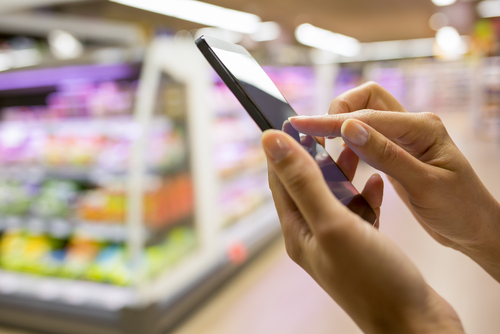We have all been on the receiving end of intrusive marketing through unsolicited spam via email, text messages and even social media for well over a decade. The main gripe against these marketing tactics is that they are unsolicited.
With the emergence of Generation Y and X, people are no longer hesitant in providing personal and demographic details in return for getting benefits such as personalised services and offerings.
It gets compounded by the technologies ‘in hand’ – mobile and internet. The retailers of today are in a unique and unprecedented position as they can now not only provide varied and tailored options to their customers, but also measure, predict and refine their shopping experience. This is made possible by combining the availability of cost effective computing power on the cloud, big data and Internet of things (IoT).
>See also: Why omnichannel retail is more than just a buzzword
The retail industry has come long way from the days of mail order catalogues. Retailers now have the ability to reach customers through various omnichannels. Multi-channel retailing means delivering a seamless retail experience to consumers across the store, e-commerce, mobile, and social channels. Many retailers are still in the early stages of exploring the available options.
Today’s retailers have technology at hand to measure and enhance customers’ in-store experience to deliver a truly bespoke shopping experience. By combining big data and the IoT, tools such as Presence Orb gives storeowners better insight on how optimise their retail space.
Using these technologies, retailers are able to better understand their customers’ shopping habits and behaviour, and provide them with information on special offers or promotions in their preferred channel of engagement. For the retailers, these technologies provide them with invaluable data on what sells, to whom and when and through what channel.
Some of the largest retailers use their in-store as their primary selling channel, yet understanding what works and what doesn’t within a store is at best a mystery. To better engage a customer, retailers fundamentally need understand their customers.
A survey from Hamlin Harkins asked executives from global retail corporates what channel does their operation use today, or have plans to use in the future. Of those surveyed, 88% responded that they will be deploying technologies in-store store, 86% will deploy e-commerce enhancements, 81% on customer loyalty systems, 76% on social media apps and 74% on mobile apps. This trend is becoming non-reversible because if a retailer does not invest, they will be not in the market for long.
A typical store or chain requires a combination of few of the above technologies and the key success factor is deriving and analysing the insights about their customers, products and the seasonality. If a retailer has multiple locations, the above information can provide intelligence to enable smarter stocking processes – just in time replenishment and making dynamic offers such as discounts and promotions.
The successful retailer will be the one that has the ability to aggregate data from the various channels, and consolidate the information in a cohesive and actionable way that provides insights in near or real time about how their customers behave.
>See also: Digital retail – meet the customer assistant of tomorrow
Omnichannel customer engagement is only possible and effective through gaining a more thorough understanding on a customer, which enables retailers to react faster. This may be why the customer insight emerges as a retailer’s highest priority from any analytics investments.
Customers are probed, analysed and propositioned all the time whether they are in the cyber space or in physical stores – the question is, do they mind if it means getting a better deal?
8 key technologies available for in-store
1. Beacon technologies allow a retailer to get to know how many prospects entered the shop and how many are repeats. This can also provide information on how may actually bought anything.
2. Wi-Fi in the store. This can provide a means to collect more information about the visitors, complementing the beacons to obtain more granular information. This technology taps into the MAC code of the devices or IMEI details of the mobile devices, which is used as a surrogate.
3. Loyalty programmes combined with mobile apps, which provide a map on in-store and e-commerce behaviours.
4. Mobile payments can associate anonymous buyers to known ones and also steer them to loyalty programmes to increase the chances of repeat purchases.
5. Customer product preferences. Survey tools that enable customers to provide their product preferences that can be an excellent starting point for the loyalty programmes.
6. Queue management and people counting – this could be based on the video analytics to spot hotspots.
7. Bluetooth Low Energy (BLE) to enable product offer and ‘push’ marketing – this again can be combined with the loyalty application
8. Video analytics for deeper understanding of customer activities and preferences. This is fast becoming an important tool for many retailers, and has been adopted by shopping mall operators to provide value added services to show the hotspots (areas of greatest footfall), and information such as the number of shoppers that walked away from stores without entering.
Sourced from Subramanian Gopalaratnam, Xchanging







